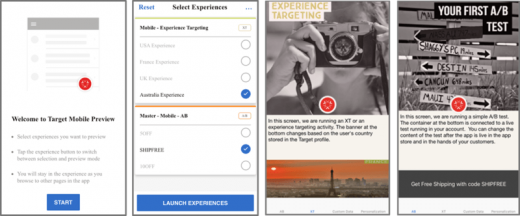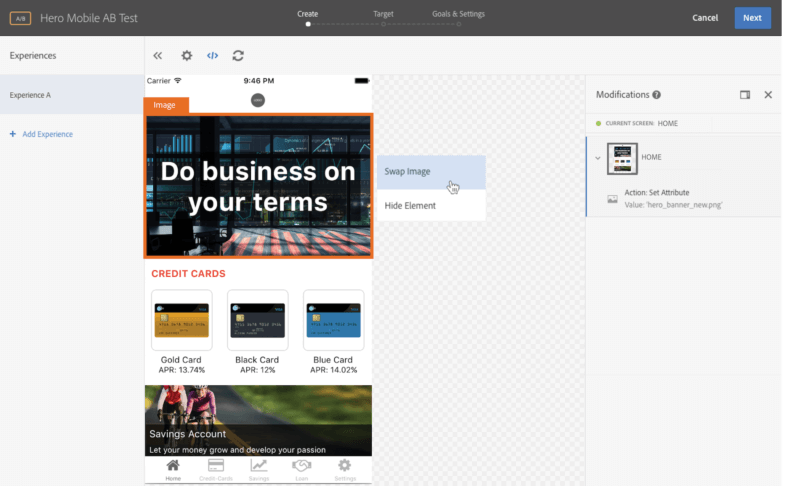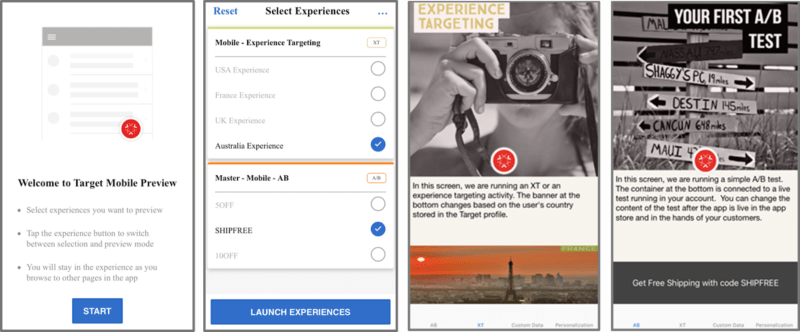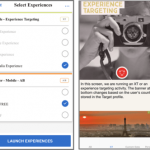Adobe Target gets some new tools for mobile marketing
A Visual Experience Composer and a visual QA make it easier for non-technical users to modify in-app experiences.

From Adobe’s blog
To help marketers better tweak their mobile experiences, Adobe is today announcing several enhancements for Target, which offers A/B testing for customizing experiences.
The key one is a new Visual Experience Composer for mobile apps. Previously, if a marketer wanted to test, say, different discounts in an existing mobile app ad — such as 10 percent off versus 20 percent versus 30 percent — she would have utilized a text-based workflow that often required some code help from a developer.
Now, Visual Experience Composer lets the marketer swap images (built elsewhere) or text inside a visual simulation without a developer, and then run A/B tests. The marketer can’t change functionality, but most ads have limited functions anyway. Here’s a screenshot:
Assisting the new Composer is a new mobile experience preview. Before, a marketer who wanted to see and share a testing variation with some colleagues would need to generate an app version that included that variation, and then deploy it for sharing by those few.
Now, the experience preview allows the marketer to generate a preview link, and then text or email that link to the colleagues’ mobile devices. Clicking on it deep links to the installed app, with the desired testing version of the app experience. If there are several testing versions within that same app to share, a selection box is shown after the link is clicked so that the user can pick the version to view. Here’s a sequence of typical screens for the mobile experience preview, from Adobe:
A new Batch Experience Prefetch could keep some users from uttering bad words if they lose connectivity.
For apps that utilize the new Adobe mobile SDK, a single call to Adobe Target “requests all experience variations from live optimization activities and a snapshot of the visitor profile,” says the Adobe blog post announcing today’s enhancements.
Those variations are stored in an edge network of servers that are located near the user at the time, in case the Net is jammed, or on the mobile device itself. This means that, when the user’s commuting train goes through a tunnel and connectivity is temporarily lost, there is a brief period in which interaction can still continue.
Adobe Target Senior Product Marketing Manager Natalie Lacuesta Byrum suggested to me the use case of someone who is checking her hotel room specs when in a cab.
Even with a brief loss of connectivity, she said, the traveler might still see their amenities request with their reservation, because the user’s specifics have been cached on the device. Previously, the traveler would have been out of luck in that circumstance.
And Adobe Target is highlighting its new Node.js SDK. It allows developers to more readily implement Node.js, which is designed for employing JavaScript in server-side applications where web page content can be more dynamic.
Marketing Land – Internet Marketing News, Strategies & Tips
(14)









